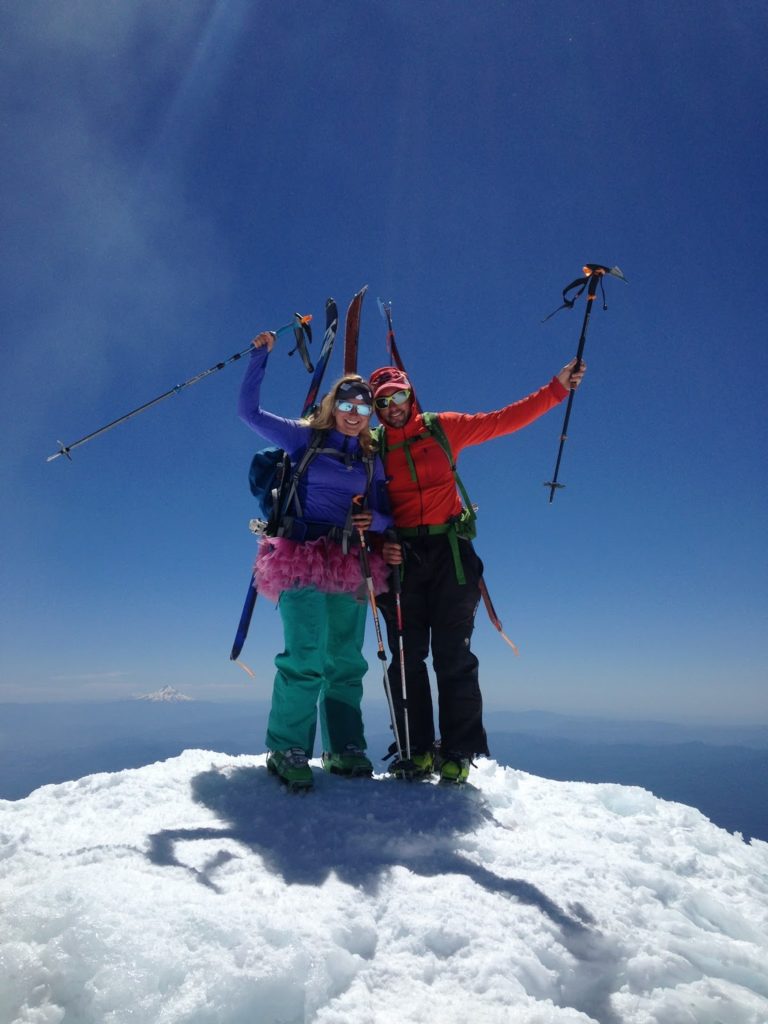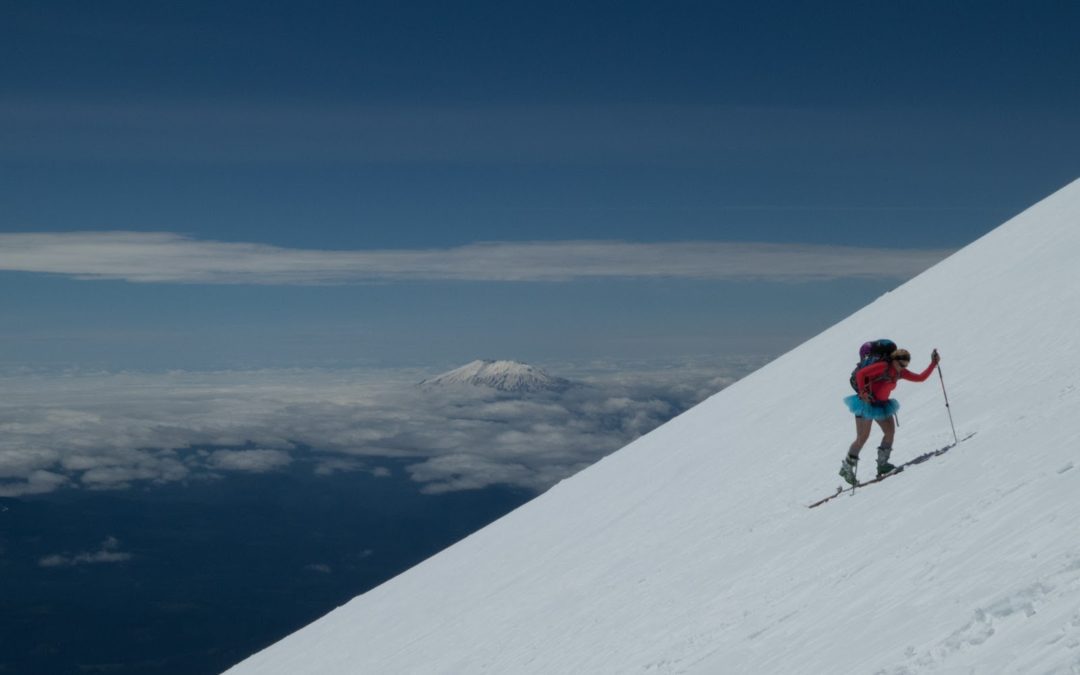When I head into the mountains, I always share a backcountry trip plan with an in town designated in-case-of-emergency-person. The lucky job usually falls to my good friend Q, who you may remember as the doggy-dad of one Mr. Porter Pants. What to include in the backcountry trip plan is important, as outlined below, to help your in-case-of-emergency person know what to do. Most of the time their job is a fairly benign responsibility, and generally Q remains largely unconcerned about me. Most of the time.
Two years ago, I took off to climb Mt. Adams in a day with my boyfriend J. We drove down on Saturday morning and had an epic brunch with friends in Portland. By the time we it to the trailhead, it was late-afternoon. Our plan had been to climb to Lunch Counter (about the halfway mark) on Saturday, make camp for the night, then summit by midday and come home on Sunday evening. By the time we made it to the trailhead it was late. Instead of heading up, we slept in the truck and did an alpine start for the summit with lighter packs. It was an easy decision.
An easy decision we didn’t communicate…
We slept and climbed and eventually summited and skied down and it was a straightforward affair blah blah blah…. until we drove into town and back into cell service. I had dozens of missed calls from friends and a series of Facebook posts asking about my whereabouts. I made a rookie mistake. I’d told Q where we were going, but I neglected to give him an accurate itinerary or let him know when we’d be back.
Q had called the local ranger station looking for me (like he should have done based on a standard backcountry trip plan), but they were closed on Sunday (because of course they were). Worried about me, he’d reached out to some of my usual climbing partners and tried to find out which route I may be on and how long it would take and what the options for rescue were if something happened and what they thought he should do next. Unintentionally, I had thrown his world into a tizzy while I was drinking a beer on the summit.

I turned his relaxing weekend of non-responsibility into one of harrowing consequence. I’m still really sorry about that Q.
This incident was a good reminder bout the importance of creating a trip plan and communicating that plan to your emergency contact. Since then, I’ve been diligent about creating and delivering a trip plan. It’s good practice for logistics in general, and it might just save your life.
What to include in a trip plan:
- Who’s going: The name, address, phone number, known medical conditions, and general skill level of each member in your party. Plus, the emergency contact person for each individual on the trip. When possible, designate a “lead” emergency contact who will coordinate for the whole group in the case of an emergency.
- Trip objective: When you’re leaving, where you’re going, what route you expect to climb, how long you think it will take, and when you plan to be back in contact. If you have a planned turn around time list that as well. Provide a window of time during which you plan to return (between 4-7 pm, for example), and set a specific time to contact authorities if you aren’t back yet (only call S&R if we aren’t back by 1am the next day, for example).
- Logistics: The make, model, and license plate number of the car(s) you will be taking. Include the name of the trailhead where you’re planning to leave the car. Provide a contact phone number for the local land manager and Search & Rescue units in the area. You want to make it as easy as possible for your emergency contact person to launch a response.
- Gear: List the gear you will have both personally and as a group. It can be helpful to rescuers to know how much stuff you have with you. Include things like tents, stoves, first aid supplies, and safety equipment.
When you’re planning your next objective always remember Roger Baxter-Jones’ golden rule: “Come back alive, come back as friends, get to the top — in that order.” It’s good to have a Plan B, Plan C, and Plan Turn-Around-And-Find-A-Pub. With good friends of course.
p.s. When I talk about mountain safety, I like to remind you to set up your emergency contact information access on your phone. It gives anyone access to critical information you want them to have without needing your passcode. Just do it. I made you a handy how-to guide.
p.p.s If you don’t have one already, I really encourage you to get a Personal Locator Beacon (PLB) as well. Getting help in the backcountry can take hours, and this device triggers immediate action in the case of emergency. Here are 5 things you might not know about PLBS.






